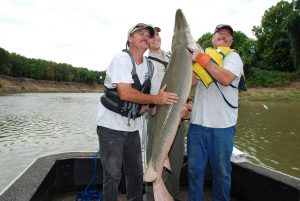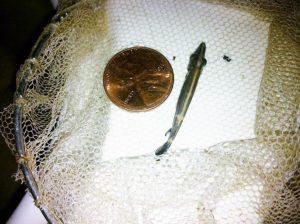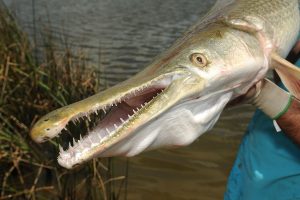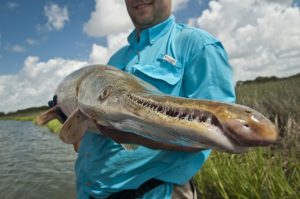#GARWEEK: Alligator Gar Survey
Thursday, June 14th, 2018
Trinity River trip. Fishing guides Sam Lovell (left) and Steve Barclay (right) with Craig Bonds in the middle. Image: Larry D. Hodge
This is Passport to Texas
Researchers at Heart of the Hills Fisheries Science Center know a lot about alligator gar: how long they live, how often they reproduce and how healthy their populations are in Texas. One important data set is still missing, and
that’s the preferences and opinions of the people who care about this unique species.
We’ve spent the last decade learning about the biology of alligator gar, and from that we know that we have a variety of management options on the table. What we need now is constituent input.
Warren Schlechte is a research biologist at Heart of the Hills. He and other inland fisheries staff are using a voluntary online survey to better understand who their constituents are, how anglers like to fish, their harvest practices and how they’d like to see alligator gar managed in the future.
We know a lot of people value this fish. To make sure we’re getting the best decisions moving forward we want input from all.
After the information is collected, inland fisheries staff will use it to inform future management decisions about alligator gar fishing rules and regulations.
At the end of the day our mission is to provide an enjoyable fishing experience for today’s anglers while conserving the species for tomorrow. By balancing sound science with our constituents desires we believe we can achieve that goal.
The survey’s available June 15 through the end of July. Find a link to it at passporttotexas.org.
The Sport Fish Restoration Program supports our series.
For Texas Parks and Wildlife…I’m Cecilia Nasti.





 Passport to Texas is a
Passport to Texas is a  Passport to Texas is made available by:
Passport to Texas is made available by: